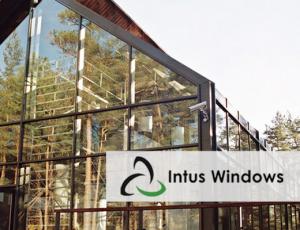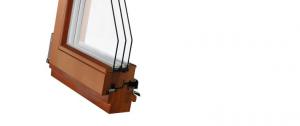Leading Window Manufacturer Explains Passive House and Net Zero House Designs
Intus Windows, a leader in energy efficient windows, says that there are differences between passive house designs and net zero house designs.
A passive house is a home that is designed to be incredibly energy efficient,
NEW YORK, NEW YORK, USA, September 30, 2014 /EINPresswire.com/ -- According to Aurimas Sabulis, managing director of Intus Windows (http://www.intuswindows.com/), a worldwide leader in the manufacture of energy efficient window products, a “net zero” or “zero energy” house is one that essentially uses the same amount of energy, on an annual basis, that is produced on the site.— Aurimas Sabulis
“A net zero home is achieved through the use of PV solar panels on site to satisfy the home’s electrical needs,” Sabulis says. “Of course, these homes still produce greenhouse gases because, at night or when the sun isn’t shining, they use conventional grid electricity as the main energy source to power the home.”
On average, according to Sabulis, most net zero homes still get at least 50 percent of their energy from the grid at night or when the sun isn’t shining. This is offset during sunny days when the unused power generated by the PV solar panels is sent back to the grid for use by other utility customers.
“On the other hand, a passive house is a home that is designed to be incredibly energy efficient,” says Sabulis. “It is designed to use the least amount of electricity and fossil fuels possible, to heat and cool the home.”
Sabulis says that passive house design buildings are airtight (<0.60 ACH @ 50 Pa) and the annual heating requirement is ≤15kWh/m2/year (4.75 kBtu/sf/yr).
“It requires the use of energy efficient triple pane windows like the ones we produce here at Intus Windows,” Sabulis explains. “Passive solar energy from the sun is captured by south facing windows during wintertime, to help heat the home, instead of relying on active systems like electricity and/or fossil fuels.”
This creates a home, he says, that can save up to 90 percent of space heating costs and provides a very comfortable indoor air environment.
“Designing and building a passive house or a net zero structure are great goals to aspire to,” Sabulis says. “Building experts say that homeowners should strive for passive house standards but should at least attain a net zero design, because it is easier and more cost effective. The bottom line is that the more energy efficient a home is, the less energy it will require to heat and cool it.”
Intus Windows (http://www.intuswindows.com/) is a pioneer in manufacturing and distributing super energy-efficient windows and doors in the United States. Driven by technology, innovation, and continuous progress Intus Windows energy-efficient windows, doors, and curtain walls lines will fit any commercial, residential or industrial application, and they are Passive House Certified and suitable. For the past 21 years the company has manufactured and installed more than 800,000 windows and doors all over the world, with main export markets in Scandinavia, Central and Eastern Europe. Today, with a manufacturing facility in Lithuania, Intus has entered into the super energy-efficient window market here in the United States. For more information, call 1-888-380-9940.
Ema Klimaite
Intus Windows
888-380-9940
email us here
Legal Disclaimer:
EIN Presswire provides this news content "as is" without warranty of any kind. We do not accept any responsibility or liability for the accuracy, content, images, videos, licenses, completeness, legality, or reliability of the information contained in this article. If you have any complaints or copyright issues related to this article, kindly contact the author above.




